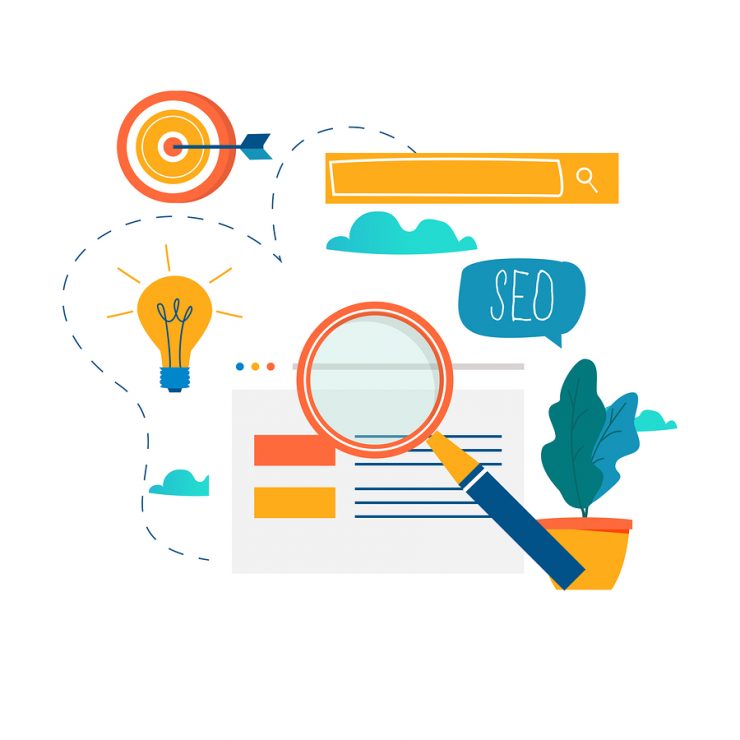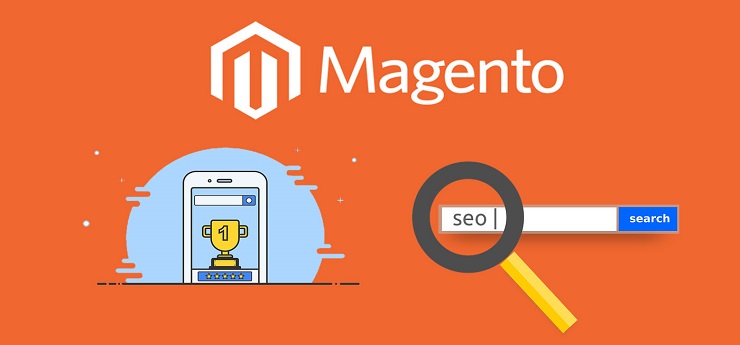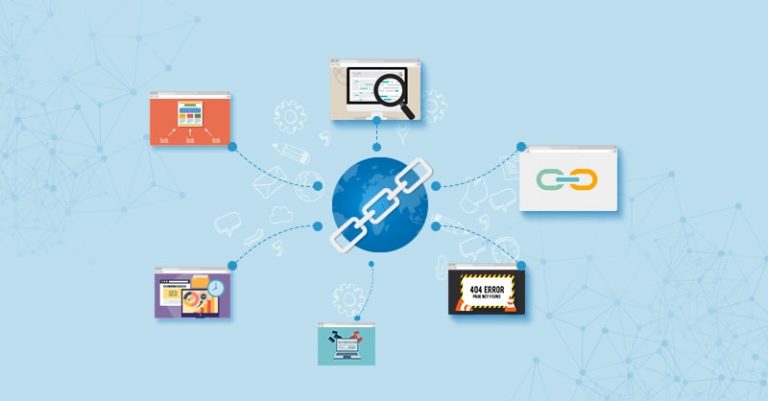SEO Guide For Beginners 2023
Hello dear visitor! We can imagine that if you ended on this page, you are probably completely lost and have no clue what SEO(Search Engine Optimization) means for you or your business.
We promise you will find some good stuff below, so keep reading our SEO Guide For Beginners 2020!
Probably some of the questions you have been asking yourself about SEO are :
- What is SEO?
- What is the Google Webmasters Tool?
- Should I hire an SEO expert?
- What is ON-Page SEO?
- What is OFF-Page SEO?
and much more…
What is SEO?
Definition: SEO – Search Engine Optimization is a term that indicates the customization of a website(page) so search engines can find it easier and give it a better position for a certain keyword.
Let’s start with a few steps to help you learn SEO and achieve better rankings in 2020.
SEO refers to organic traffic from search engines and the goal is to rank higher for particular keywords that describe your business or products.
Search Engines
Technically we can separate this topic in 3 subtopics.
- Crawling
- Indexing
- Results
Crawling
The process when so-called bots or spiders scan your website content, keywords, titles, images, navigation or any other kind of data.
Indexing
Imagine a huge database where all the crawled website data is stored and getting ready to be classified.
Always allow spiders to crawl your website otherwise, you will be Mr.Nobody to Search Engines.
Add your website to Google Webmasters Tools to keep track on your website traffic and fix potential issues.
Results
Showing the best possible answer for your search query posted on a particular search engine.
Data is being picked up from the index, processed through the ranking algorithms and served to the end user.
Check Brian Dean SEO Ranking Factors List
1.Keyword Research

Before we dive deeper into details about SEO, we will explain how to find the best keywords for your website.
First, always keep it in mind that bad keywords are useless for your business and the effect will be minimal, so we suggest you to spend some time researching for the right terms.
How to find keywords?
There are a lot of free and paid Keyword Research tools on the web, but we will keep our focus explaining only 2 of them: Google Keyword Planner and Neil Patel Ubersuggest.
Google Keyword Planner
This is an official tool from Google, so what you get in return as data comes straight from Google. Is someone asks, this is the most reliable Keyword Research tool, and guess what? It’s totally free!
Before you start, you will need a Gmail account to access the tool, if you already don’t have one.
For first time users please check here.
So, this tool allows you to see the average traffic estimate (visits) for a month for a particular keyword together with the closest variants of that keyword.

These data should help you to get a better idea about your audience, and searches related to your topics.
- You can select the keyword and add it to plan
- You can change the match settings(broad, phrase, exact). We always suggest to chose the exact match.
- Add the keyword to plan.
After adding the keyword to your ad plan, chose Plan Overview in the right navigation menu. That will show you how much impressions, clicks you will get for the selected keyword on monthly basis. Try to play with the parameters and post a comment below if you need some help.
Ubersuggest
It’s known that Ubersuggest is pulling the data from Google Keyword Planner, but with a much nicer and user-friendly interface.
With Ubersuggest you can see the monthly volume immediately after the search, switch from suggestions to related terms and much more…
Fast loading, nice interface, free to use, easy to use are just some of the pros this tool is offering.
If you want to learn more on how to use Ubersuggest click here.
You can further explore the keywords you like on Google Trends which will give you a much nicer insight on what’s popular at the moment on any location you chose.
We think that is enough to start and no need to over complicating things at the beginning. Play with the tools, find some good keywords that you like and it’s time to proceed to step 2 from our SEO guide for beginners.
2. On-Page SEO
The list of tasks that are classified as On-Page SEO is quite big and complex in 2020. Before it was all about meta tags, but nowadays it’s also about a mobile-friendly website(responsive design), rich snippets, page speed, internal linking, external linking and much more.
Seo-Friendly URLs
Simple!. If you chose the right URL, the chances for ranking better on search engines are much higher then websites with not SEO-friendly URLs.
Not SEO-friendly URL example:
www.example.com?p=123
www.example.com/catalog/product/view/id/157/index.php
SEO-Friendly URLs example:
-Always try to make your URLs short, nice and appealing.
-Never forget to include the focus keyword in the URL if that is possible.
Let’s say your focus keywords is: “best automatic cat feeder”.
Your website URL should look like:
www.yourwebsite.com/best-automatic-cat-feeders or
www.yourwebsite.com/best-automatic-cat-feeders-in-2020

In the end, your goal is 1 page on Google, and there 90% of the URLs are SEO-friendly.
Read more on How to make SEO-Friendly URLs.
Meta Tags
Tags are in fact helping search engines to understand what’s most important on the page they are crawling.
Meta title
- It should be no more than 70 characters long. Widely accepted by SEO experts but in some cases, it can exceed this limit. It actually depends on the pixel width of the title which should be no more than 580px (Free Title/Meta Description pixel width checker).
- Focus keyword should be included as part of the title tag.

Since this is one of the most important things on the page, we suggest to always wrap it around <h1></h1> tag.
Subheadings can be <h2>,<h3>… tags.
Hint: Be careful on dynamic websites since most of the themes have a predefined h1 tag.
Meta description
In modern SEO meta description don’t have any influence in the rankings, but it reflects the CTR percentage on your page. Try to describe your page or products as best as possible with:
- 160 characters limit or 930 pixels.
- user-friendly text
Meta description appears below the page URL on Google search results. Иt can contribute to increased CTR than other competitors.
Multimedia Optimization
Visually appealing content is great and increases user engagements. People like visual content and the CTR is quite high on visuals.
Try to add graphics such as images, infographics, videos, gifs …
Before uploading the graphics make sure their filename is describing them at its best.
Example: best_automatic_cat_feeders.jpg
Best practice is to upload and insert the images in the exact size as needed because that will matter a lot when talking and learning about Page speed.
Alt & Title TAG
Google cannot see what’s on the graphics. So alt and title tags are the ones responsible for explaining the graphics to search engines.
Most of the CMS(Content Management Systems) like WordPress, Magento, Shopify allows us to set labels which are used as alt and title tag on theme HTML served on your website.
Otherwise, this is an example tag for the image below.
<img src=”mediaurl/best_automatic_cat_feeders.jpg” alt=”best_automatic_cat_feeders.png” title=”best_automatic_cat_feeders.png” />

Read More On How To Set Alt and Title tag For Your Website
Internal & External Links
Internal Link is a hyperlink that leads the visitor to a different page on the same website.
Code example :
<a href=”https://www.yourdomain.com/” title=”Focus keyword”>Focus Keyword</a>
They are quite important SEO factor, mostly used to establish respective website architecture, and improve your own website link juice.
External Link is a hyperlink that leads the visitor to a page on another website(different domain).
Imagine a research paper without mentioning the sources you used to get there. I will personally not read that for sure. It’s the same thing for search engines. They want external linking to respective and popular sources.
It really depends on the topic, but serious topics should have some serious external linkings. That’s the way to show Google your page is the best choice for a particular keyword.

Google crawlers are following the links on the web to find them and index websites.
Google loves navigation but be careful and do not overdo it, because it can create confusion among your visitors.
Mobile Friendly Website
Most of your website traffic in 2020 is coming from mobile. Don’t even consider doing SEO without testing your website whether it passes the mobile-friendly test.
Page speed
If you were wondering does page speed matters for SEO? The answer is 100% YES.
It’s a serious SEO ranking factor and impacts rankings a lot nowadays. But, it’s not only about that. Faster websites have better user experience and a smaller bounce rate.
In the era of mobile devices, your website should be performing quite fast on devices with less capacity to load the page. If you were wondering how to check Google page speed score, check Google PageSpeed Insights.
Google PageSpeed Insights is using Lighthouse app which is actually part of Google Chrome and will give you a more detailed overview of website page speed.
Right Mouse Click on the page you want to audit. Click Inspect and go to Audits tab. Mobile and Desktop pages speed tests are available.
Click image for fullscreen.
Another really important tool that every website guru should use is GTMetrix.
Both tools are used to measure your website page speed and hints on what and how you can improve your page speed.
Find more on How To Improve Website Page Speed
Rich Snippets
Not an SEO ranking factor, but have huge aftermath. When talking about rich snippets we are referring to a nicer overview plus additional data of your website URL on google rankings.
Why use rich snippets?
- Nicer visual representation
- Higher CTR
- Greater relevance
- Shows direct call to actions
Get Social
Including social buttons on each page doesn’t impact SEO directly, but indirectly. Users will be able to share the post content on their social media accounts which can increase traffic a lot and also links that are pointing back to your domain.
Finally, we come to the end of Part 2 from the SEO Guide for Beginners 2020.
3.Off-Page SEO
Refers to things you can implement outside the scope of your page, to improve your rankings on Search Engines.
If crawlers find a lot of outside links, comments, social media posts, mentions, reviews, blogs, blog comments, messages, youtube videos from respective sources it’s logically that will increase your reputation, and improve your SERPs rankings.
Write great content, and make people talk about that. That is the best way to reach the top level of rankings.
Below I will explain how to start with Off-Page SEO.
Link Building
One of the most commented and searched topic when speaking about SEO.
Backlinks from respective sources are still the king for rankings even in 2020, but on the other side not-relevant backlinks can harm your website instead of helping to rank.
Link building is not an easy process that can be completed quickly, and on the other side, it can be ruined quite fast if you try to achieve the goal with so-called black hat SEO.
Before you start with learning about different white-hat techniques for building backlinks, you need to understand first, how the link should be created:

Here are some white-hat techniques for link building you should start with:
- Try to get your visitors to link to you. Organic links are the best.
- Try to write some guest posts on business related websites. You will get a link at least from the author box section.
- Niche forum profile links
- Article writing with links back to your website
- Niche blogger comments
- Replace Wikipedia dead links
Do-Follow vs No-Follow Links
Do-follow links are the one that brings SEO points and helps you improve the website link juice.
They are picked up by the Search Engines and used to calculate website authority.
Higher authority leads to a better ranking!
The ugly truth is that links with no follow identifier don’t matter for SERPs ranking, but they are still better than no links at all. They bring referral traffic, and that can lead to further collaboration opportunities that could bring natural backlinks.
How to recognize a no follow link:
<a href=”your website url” rel=”nofollow”>Your Focus Keyword</a>
If you want more read: The Ultimate Guide For Link Building
Social Media and Social Bookmarking
SEO in 2020 cannot be imagined without Social Media. No matter what kind of business you are running always create social profiles on top social media websites like Facebook, Twitter, LinkedIn, Youtube, Reddit and much more.
Links from social media influencers are widely used to bring traffic to your website, increase popularity and awareness of your own brand.
Don’t forget to update your Social Media profiles frequently, to engage your followers and give them some fresh content to share and talk about.
SEO enthusiast and PHP Web Developer. I love the tech and marketing world. Also, a part-time traveler who enjoys nature.








One Comment